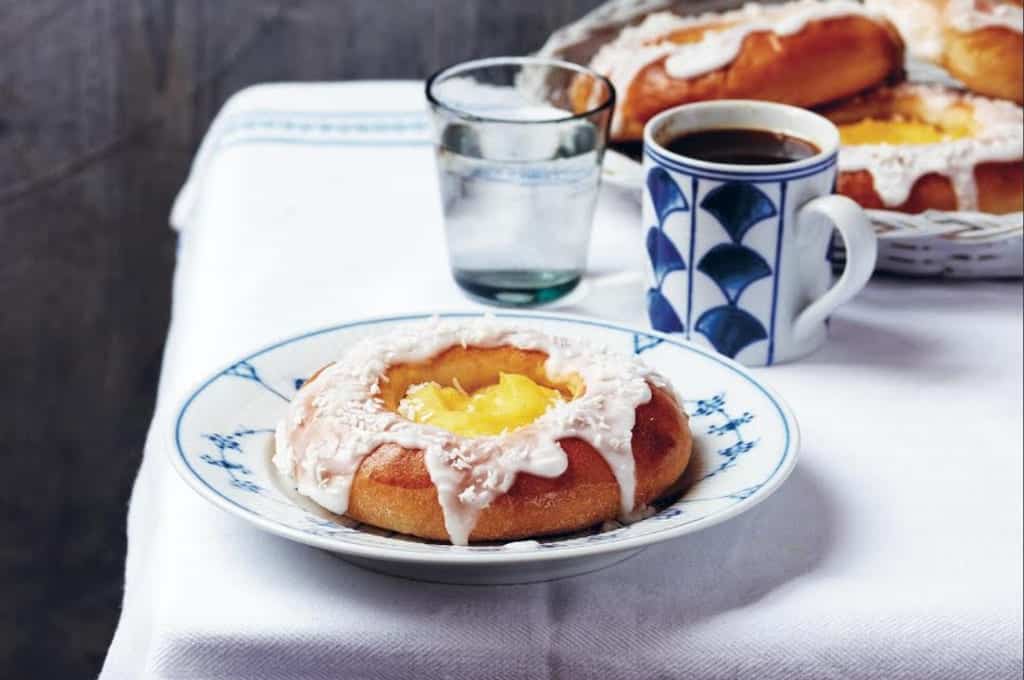Pour the warm milk into a bowl, sprinkle in the yeast and whisk together
Cover with cling film and leave in a warm place for about 15 minutes to become bubbly
Pour into the bowl of a food mixer fitted with a dough hook
Start the machine and add the cooled, melted butter
Allow to combine with the yeast for 1 minute or so, then add the sugar
Allow to combine for 1 minute
In a separate bowl, weigh out 400g of the flour, add the cardamom and salt and mix together
Start adding the flour and spices into the milk mixture, bit by bit
Add half the beaten egg
Keep kneading for 5 minutes
It is better not to add too much flour as this will result in dry buns. You can always add more later
Once mixed, leave the dough in a bowl and cover with a dish towel or cling film. Allow to rise for around 30 minutes or until it has doubled in size
After the dough has risen, roll out the dough into a cylinder and cut it into 14 pieces
Roll each piece into a neat circle, then place on a baking sheet and flatten firmly (although they will spring back into place after a while)
Make sure you space the buns out evenly
Using the base of a glass measuring around 4–5cm in diameter, press down the middle of each bun and add a good tablespoon of Crème pâtissière to each indentation
Leave the buns to rise for a further 20 minutes
Preheat the oven to 200C (400F) Gas 6
Lightly brush the buns with egg (avoid the custard centres) and bake in the preheated oven for around 10 minutes, or until done (times may vary depending on your oven)
Cover the baked buns with a damp dish towel for 5–10 minutes as soon as you have removed them from the oven to avoid a crust formin
Once the buns have cooled, make the icing
Add a few tablespoons of hot water to the icing sugar and stir
Keep adding water, drop by drop, and stirring until you have a smooth consistency that can be stirred but is still thick, like a syrup
Using a plastic pastry brush or a palette knife, carefully smooth the icing on top of all the buns, avoiding the cream centre
After each bun has been brushed, sprinkle coconut over the top
